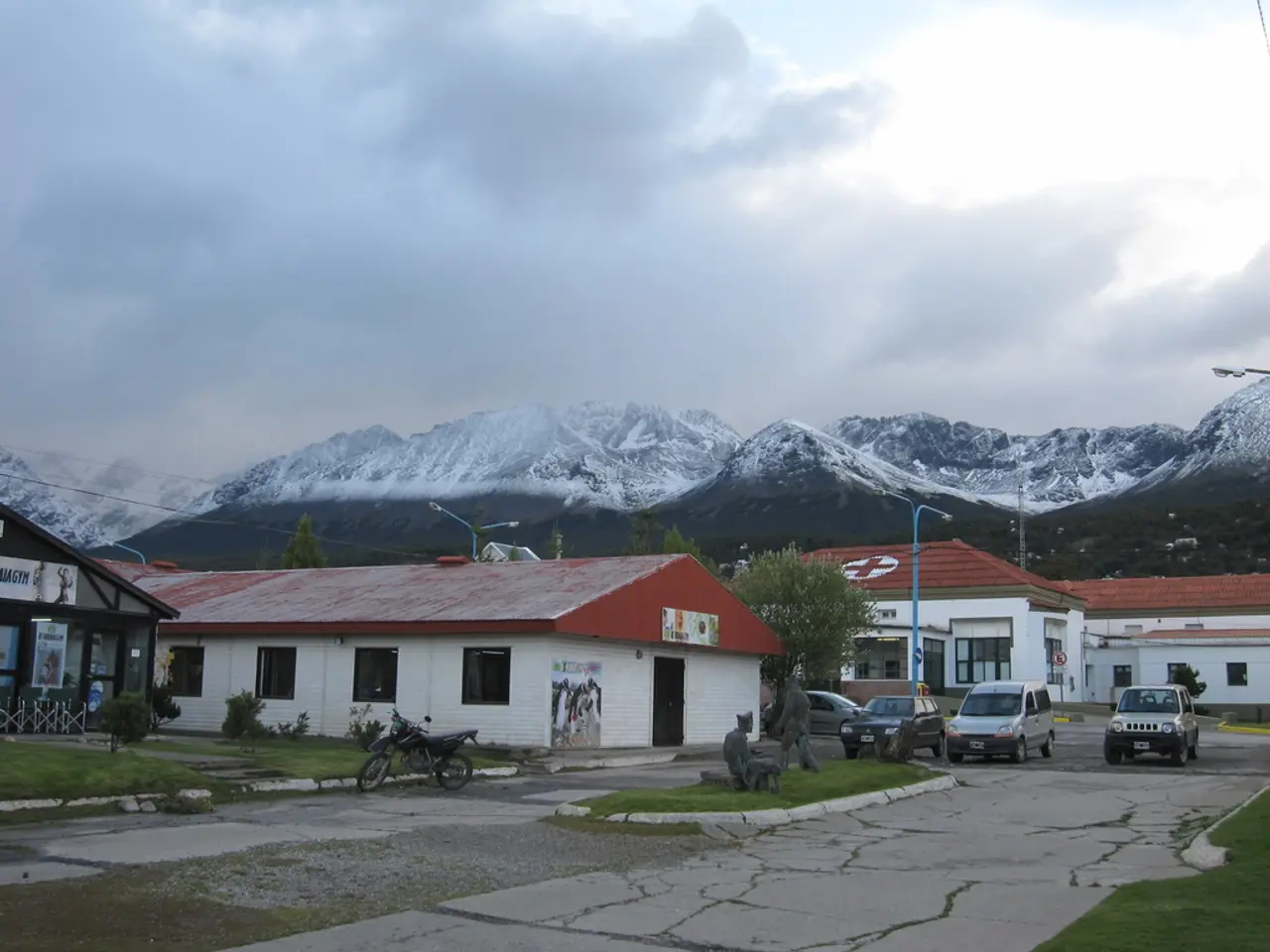Potential Snow Build-up Poses Threat to Fruit Farm Yields
A snowy winter in Iowa can pose unique challenges for fruit growers, as the cold and wet conditions can lead to a variety of weather and disease-related issues. Here's a look at the common problems faced by fruit crops in the state during the spring following a snowy winter, along with some mitigation strategies to help growers navigate these challenges.
One of the most significant issues that can arise in a snowy winter is delayed bloom and growth. The late snowmelt and cold temperatures can shorten the growing season and reduce fruit yield. In addition, late spring frosts can damage blossoms or young fruit, especially in vulnerable crops like cherries and raspberries.
Rapid snowmelt combined with spring rains may also cause water stress and flooding, as saturated soil or flooding can suffocate roots and increase susceptibility to root diseases. Excess moisture in spring promotes fungal diseases such as root rots, leaf spots, and insect pests that thrive in humid conditions. Black raspberry, for instance, is vulnerable to root rot pathogens and Verticillium wilt.
Cold and wet spring soils can also lead to nutrient deficiencies, weakening plants.
To mitigate these risks, fruit growers can take several steps. Planting fruit varieties with good cold hardiness and disease resistance can help crops withstand Iowa's variable spring conditions. Using techniques to protect blossoms and young fruit from frost, such as row covers or frost protection sprays, can also be beneficial. Ensuring proper drainage in orchards can prevent waterlogging and reduce root diseases.
Applying appropriate fungicides and pest control measures early in the season, based on monitoring, can help control disease pressure. Conducting soil tests and applying balanced fertilizers tailored to crop nutrient needs once soil temperatures rise can help address nutrient deficiencies.
Deer can also pose a threat to fruit crops during the winter, particularly when food sources are limited by snow cover. Deer may feed on gooseberry, currant, blueberry, Aronia berry canes, and fruit trees, particularly apples. Injury from deer can be distinguished by tattered cuts through canes and shoots. Exclusion, either by permanent fencing or electrified fencing, is the best solution for controlling deer. If electrified fencing is used, a ground wire must be run beside the charged wire during the winter months.
Voles (mice) can also feed on fruit tree trunks, gooseberry, currant, blueberry, and Aronia berry canes; and occasionally on raspberry canes and grape trunks under snow cover. Vole feeding on trunks can be distinguished by very narrow tooth marks. Grafting techniques can be used to replace lost bark and eventually the wood of fruit trees that have been damaged by voles. Information on grafting can be found online at the University of Minnesota, North Carolina State University, and Cornell University.
Rabbits will feed on raspberry gooseberry, currant, blueberry, Aronia berry, and grape canes; fruit tree buds and shoots during the winter. Frost heaving should be a minor concern for strawberries this spring, but it can occur under special circumstances, such as melted snow, saturated soil, and low temperatures that refreeze the top few inches of soil. This is more likely to happen in areas of a field that are poorly mulched and lack good internal drainage.
With heavy snow packs, deer are able to reach much further up into trees to feed. Snow accumulations are beneficial in moderating soil temperatures and protecting plants from extreme cold. However, if the snow persists for too long, it can lead to soil borne root rots caused by Phytophora, Pythium, or Verticillium wilt, particularly on soils that are not well drained.
Over-wintering diseases such as leaf spot, leaf scorch, powdery mildew on strawberries, downy mildew on grapes, and apple scab will be more prevalent in the spring due to snow cover. The PM 1282 2010 Midwest Tree Fruit Spray Guide provides detailed information on managing these diseases, and can be downloaded as a pdf file or purchased from the ISU Extension On-line Store.
Given Iowa's four-season climate with cold winters, light but occasional heavy snowfalls, and humid springs prone to flooding, these approaches can help fruit growers mitigate typical springtime risks after snowy winters.
- In Iowa's snowy winters, delayed bloom and growth can occur due to late snowmelt and cold temperatures, shortening the growing season and reducing fruit yield.
- Rapid snowmelt combined with spring rains may cause water stress and flooding, suffocating roots and increasing susceptibility to root diseases, particularly black raspberry.
- Cold and wet spring soils can lead to nutrient deficiencies, weakening plants and making them more vulnerable to various diseases.
- To mitigate these risks, fruit growers can employ strategies such as planting cold-hardy and disease-resistant fruit varieties, protecting blossoms and young fruit from frost, ensuring proper drainage, applying appropriate fungicides and pest control measures, and conducting soil tests to apply balanced fertilizers.
- Deer, voles, rabbits, and frost heaving can also pose threats to fruit crops during the winter, necessitating exclusion methods, grafting techniques, and proper field management practices. Over-wintering diseases like leaf spot, leaf scorch, and apple scab will be more prevalent in the spring due to snow cover.








